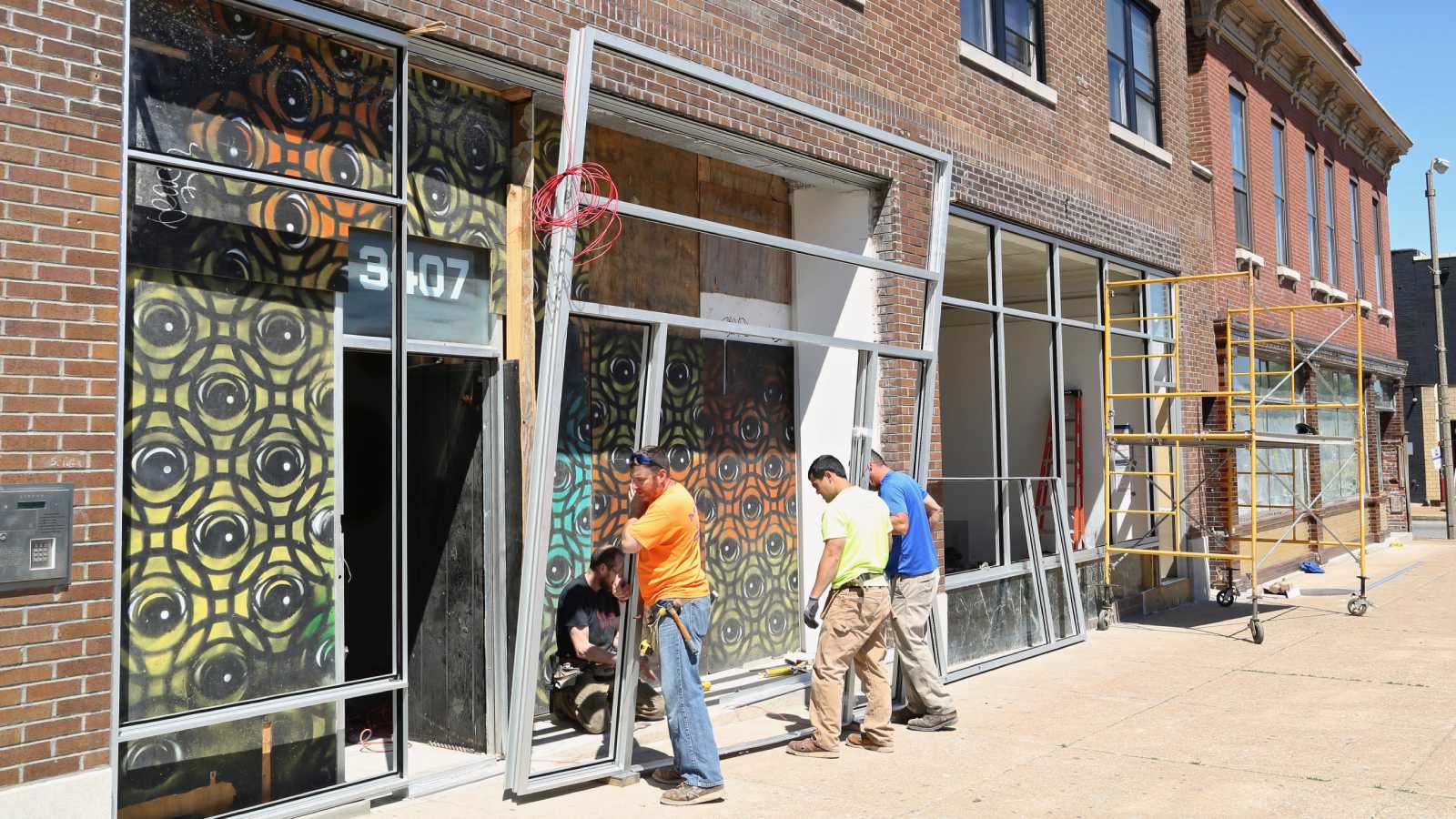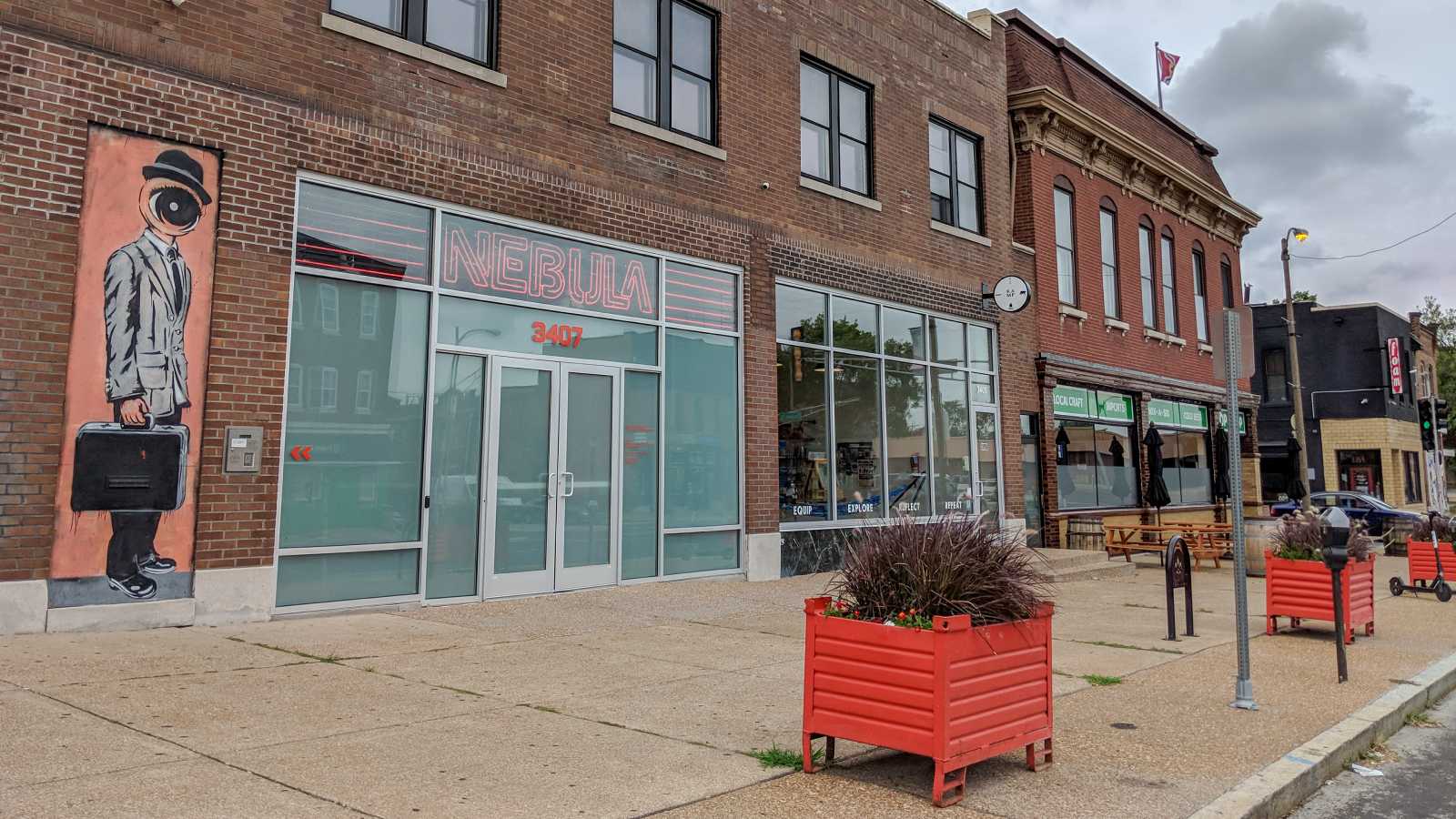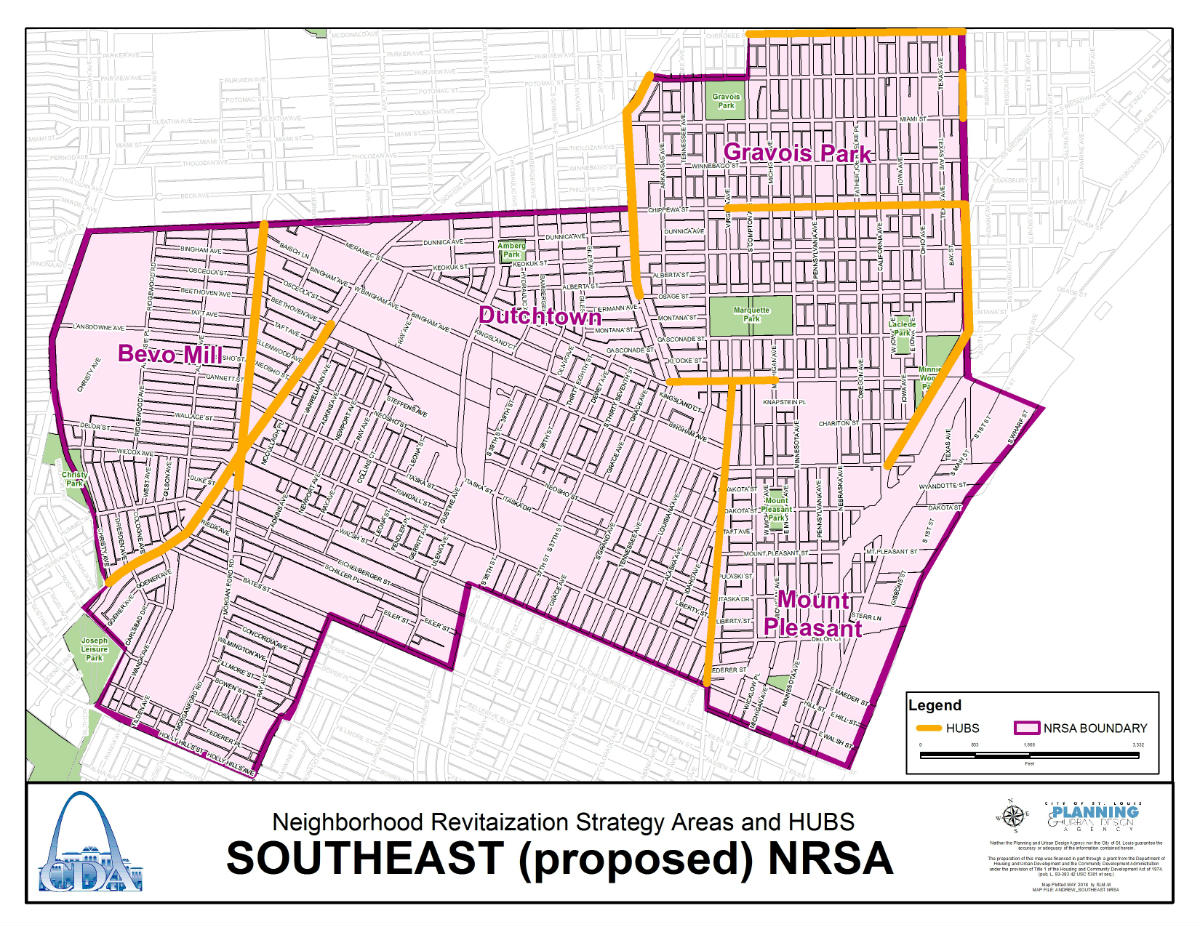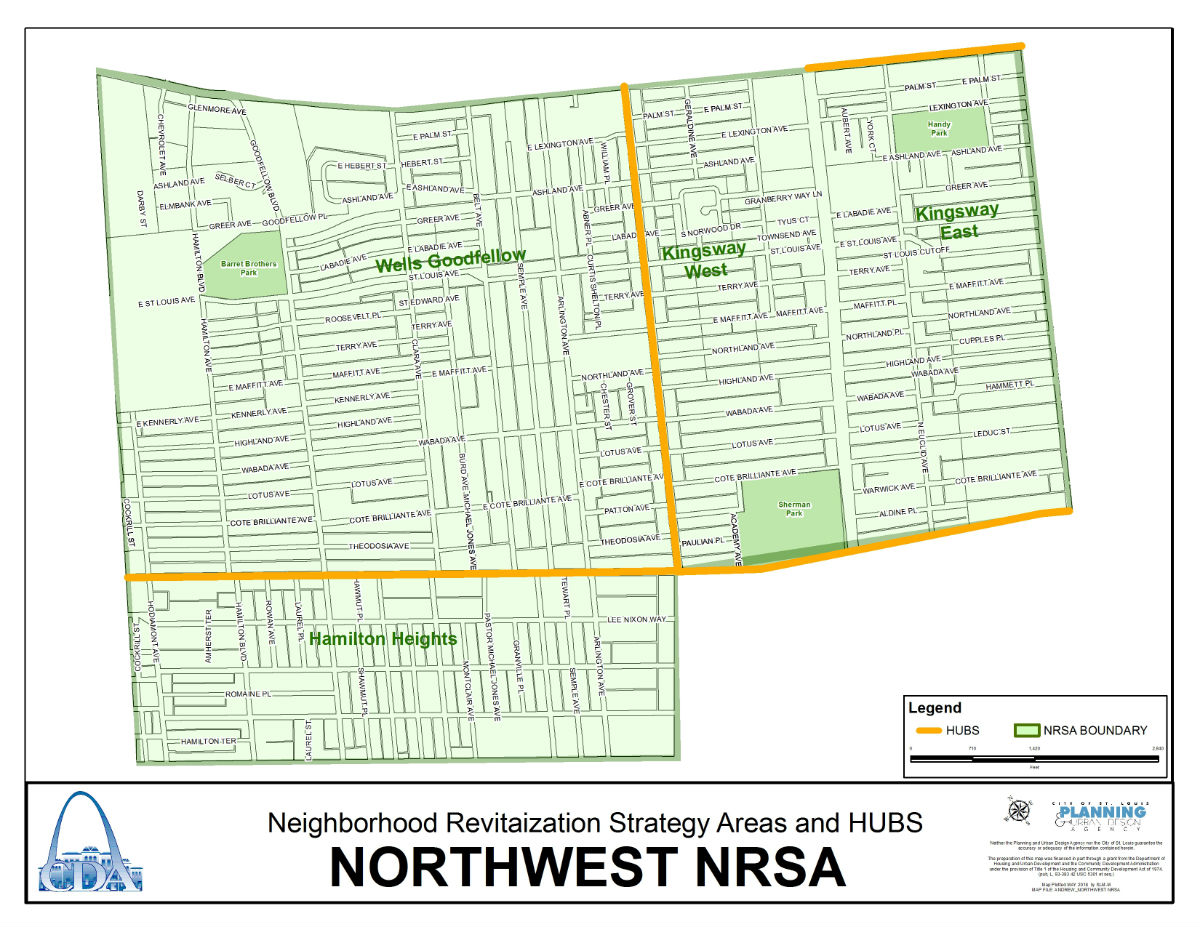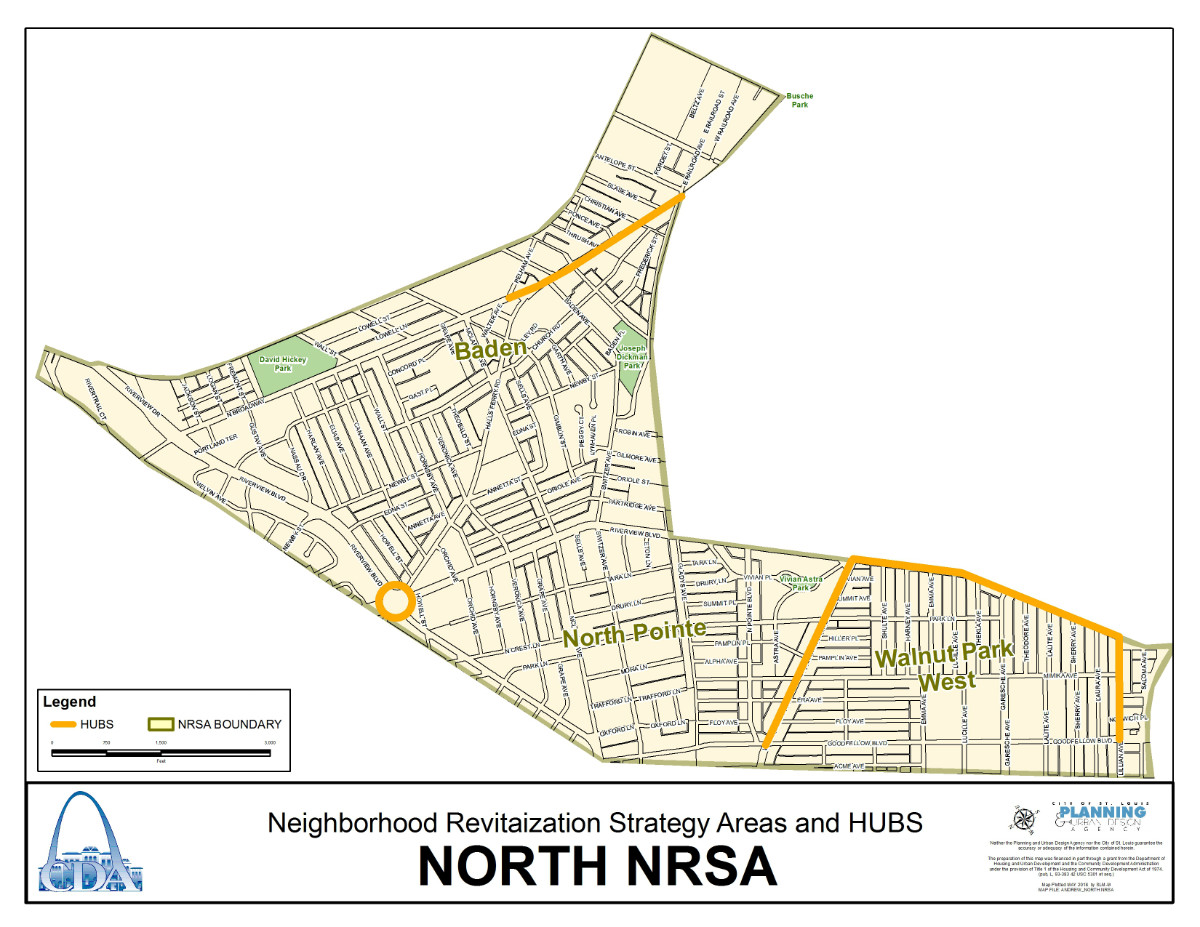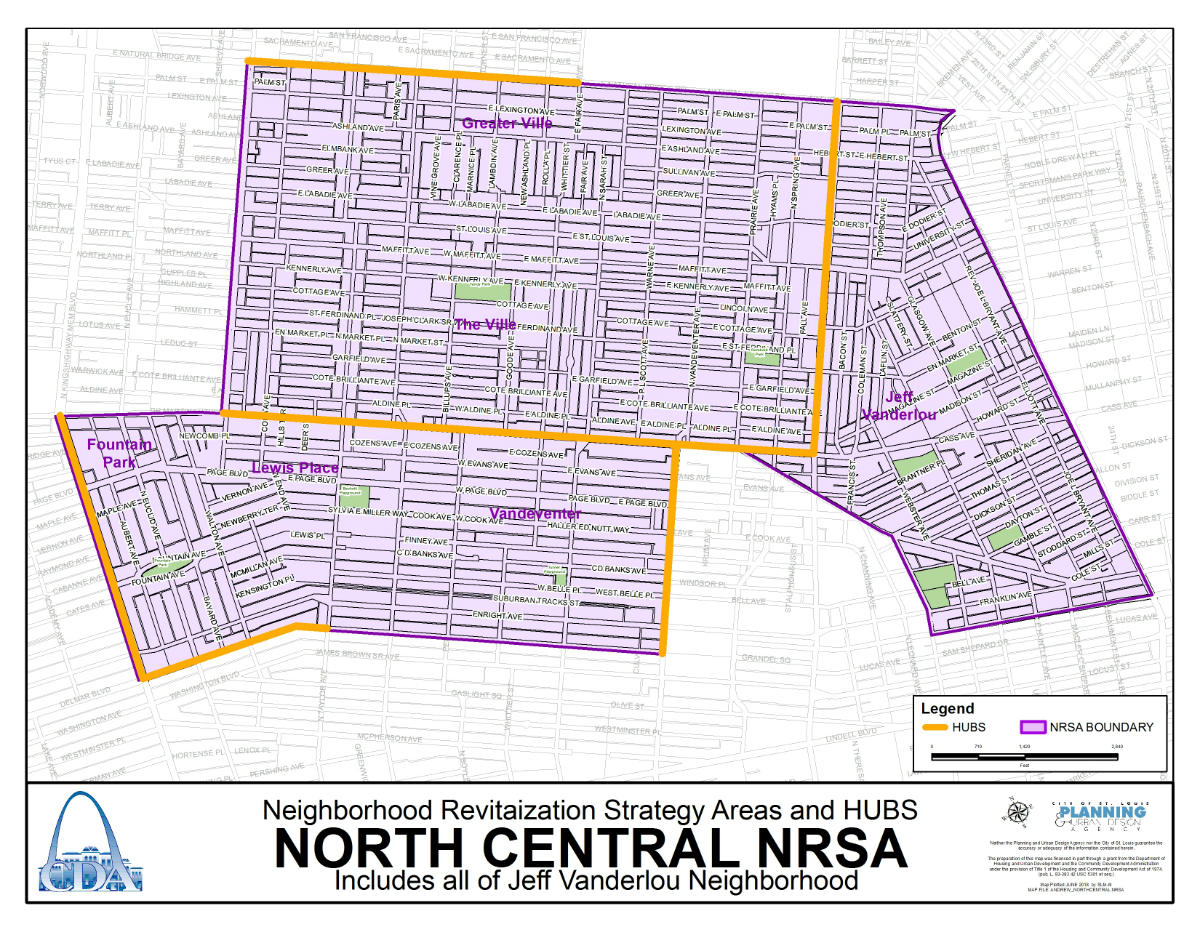The City of St. Louis recently announced $1,000,000 available in grants to incentivize improvements through the new and improved facade grant program. The forgivable loans can provide up to $20,000 to eligible business and property owners in an effort to increase development in otherwise disinvested neighborhoods.

These grants are offered through the Neighborhood Commercial District Improvement (NCDI) Program, which is administered by the St. Louis Development Corporation (SLDC), and federally funded by the Community Development Block Grants Program (CDBG) through the US Department of Housing & Urban Development (HUD). Projects may tackle everything from small-scale signage and exterior lighting upgrades to large-scale accessibility modifications and storefront overhauls.
Facade improvements at 3405 & 3407 S Jefferson in Gravois Park
Funding is available annually, although the amount each year may vary; and while the program itself is not new, the application process is. The SLDC’s Request for Proposals was created in an effort to focus improvement dollars in localized areas. “We want to be intentional about where these dollars go”, says Leonard Johnson, Director of Neighborhood Development for SLDC. “The new process will help the selection be as equitable, fair, and inclusive as possible.” The program in past years has resulted in many improvements scattered across the entire City; this year, Leonard hopes that renovations across contiguous stretches will be made possible.
The program has targeted five Neighborhood Revitalization Strategy Areas (NRSA), with emphasis on commercial corridors within those districts. These areas, which are primarily located in North St. Louis, were selected to complement the City of St. Louis’ 2015-2019 Consolidated Plan – a study and corresponding action plan that “assesses market conditions, affordable housing, and community development needs in the City of St. Louis and establishes data-driven, place-based priorities for investment in community development.” This research identified three “market target areas” and five commercial corridors: the Dr. Martin Luther King Jr. corridor, the Grand corridor, the North Broadway/Baden corridor, the Cass
However, buildings outside of those areas may still be eligible; buildings must be commercially zoned and serve a commercial use in an area that is predominantly residential (at least 51% within a 1-mile radius), and in an area that is predominantly low-to-moderate income (at least 51% within a 1-mile radius) as indicated by the most recent census data. Properties adjacent to recently improved projects, whether through the facade grant program or by other means, may receive higher priority than isolated ones, as they will help contribute to the overall improvement of a commercial strip.
The SLDC’s Request for Proposals document outlines the specifics on eligibility and more; in short, eligible improvements include those that improve the appearance of a building and are necessary to maintain the historic facade. Many past projects are examples of those that would not otherwise have been possible, due to the high cost of historic-minded renovations.
The program typically funds 45 to 75 different projects throughout the City, depending on the quantity and variety of applications received. Those projects that are not selected in 2018 may go on a waitlist for future
Proposals are due this Friday, August 17th, by
